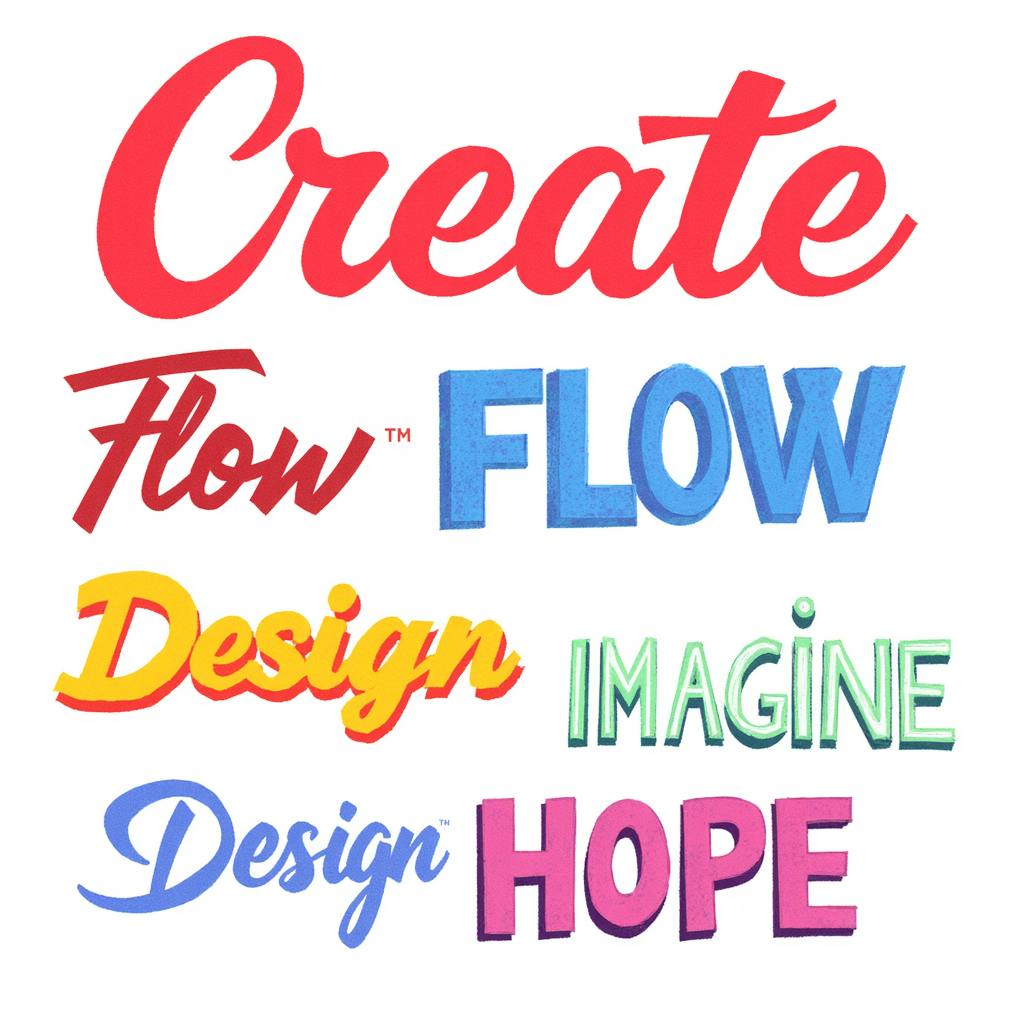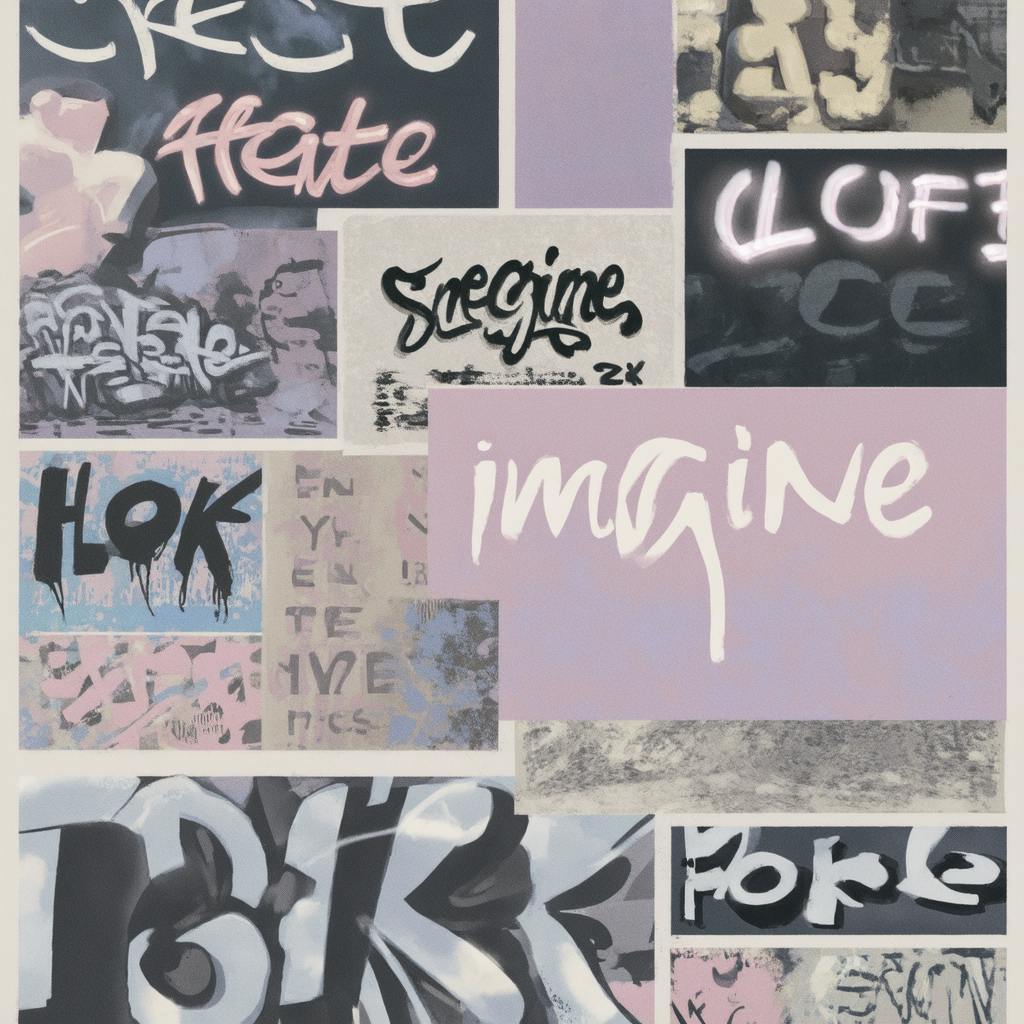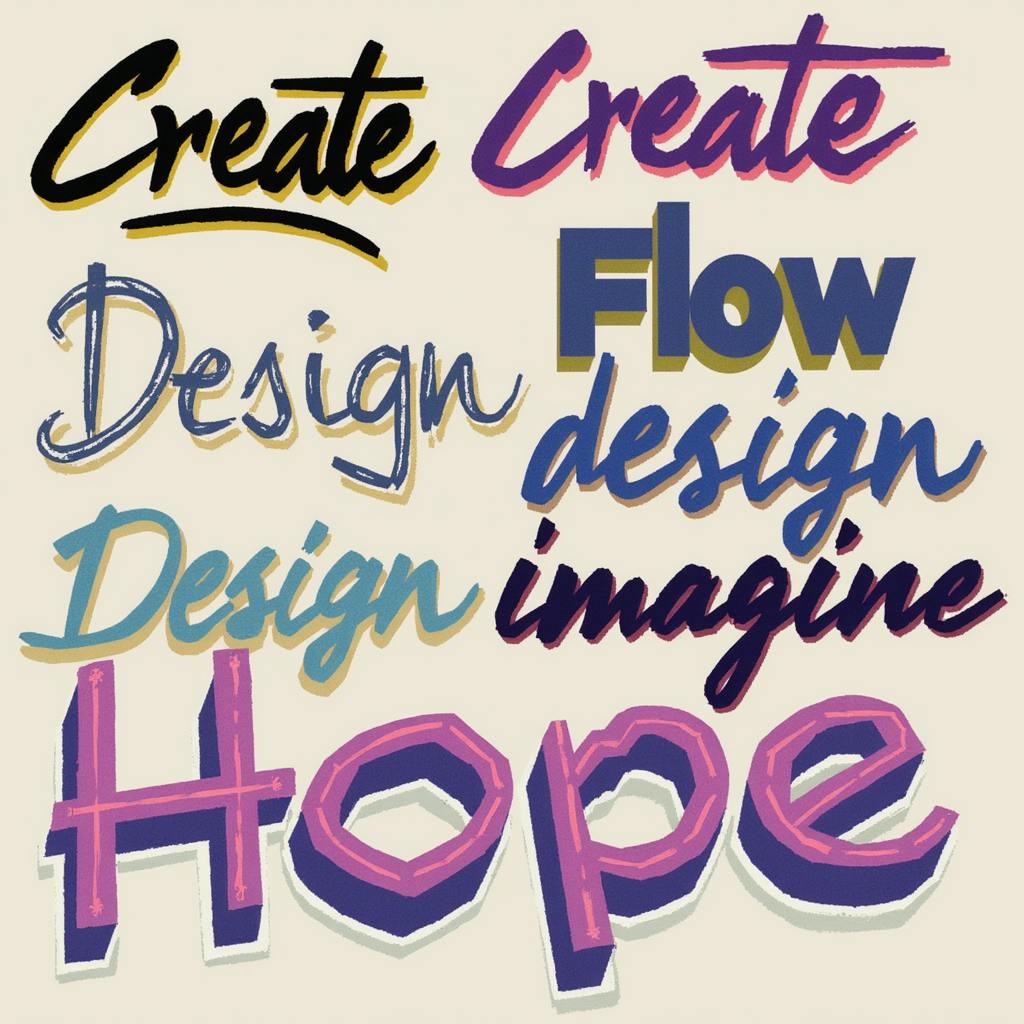In the world of branding, word design plays a pivotal role in conveying a brand’s identity and message. Different word designs, encompassing typography, artistic concepts, and custom styles, are integral in creating memorable brand images. These designs are more than just letters on paper; they become emblematic of what the brand stands for. Let’s delve into how different word designs can transform a brand’s presence, with creative word design examples and innovative ideas that captivate.
The Art and Science of Typography and Word Design
Typography is both an art form and a science that influences how audiences perceive message and brand identity. It’s amazing how typefaces, kerning, and line-spacing can evoke specific emotions. For instance, the sleek lines of a sans-serif font can communicate modernity and efficiency, while a serif font might suggest tradition and trustworthiness. Understanding these nuances can guide the creation of compelling word designs that resonate with target audiences.
Custom word design for branding is a powerful tool. It allows brands to craft unique visual identities that are immediately recognizable. Take Coca-Cola for instance; its sweeping, cursive typeface is synonymous with its nostalgic branding. This custom word design extends beyond mere aesthetics—it encapsulates the brand's essence and legacy.
Innovative Word Design Concepts and Techniques
From disruptive design to minimalism, innovative word design concepts are continually evolving. One method gaining traction is kinetic typography, where text dynamically changes on a screen. This approach not only captures attention but adds an interactive element to brand storytelling.
Another burgeoning technique is 3D typography, which involves creating text that appears to leap off the page or screen. This artistic word design idea can be especially compelling in digital advertising or packaging, where capturing a viewer's interest is crucial within a split second.
Moreover, blending illustration with typography can yield stunning results. This method adds depth and character to words, creating a more engaging experience. Such artistic word design ideas are particularly beneficial for brands in creative industries or those targeting younger demographics.

AI made with Dean Jones
Addressing FAQs: Making the Most of Word Designs
How does typography influence brand perception?
Typography fundamentally affects brand perception by setting the tone of the message—whether it’s formal, playful, luxurious, or accessible. The choice of typography should align with a brand’s values and what it hopes to communicate to its audience.
What is the benefit of custom word designs?
Custom word designs allow a brand to stand out in a crowded market. A distinctive font or style becomes part of the brand’s identity, often becoming synonymous with the products or services offered. These designs can also enhance brand recall, ensuring customers remember the brand long after interacting with it.
How can brands leverage innovative word design concepts?
Brands can incorporate innovative word design concepts by staying updated with design trends and understanding their audience’s preferences. Experimenting with new styles like kinetic or 3D typography can keep the brand fresh and relevant.
FAQ on Different Word Designs for Branding
Branding is the backbone of a company’s identity, and word design—often embodied in the logo, typography, and taglines—is a critical part of it. This article will explore various aspects of word design in branding to help guide your brand journey.
What are some examples of different word designs for branding?
Word designs, or typographic elements, come in various styles and forms. Here are some of the most popular examples:
- Logotype: This is a brand identifier created from typography. A logotype uses fonts in a customized design to convey the brand’s name and essence, such as Coca-Cola or Google.
- Monogram: Often used by luxury brands, monograms combine letters in a stylish format. Examples include the interlocking 'LV' for Louis Vuitton or 'YSL' for Yves Saint Laurent.
- Wordmark: Similar to a logotype, wordmarks are often straight text representations of a brand’s name, utilizing a distinct font. Examples are FedEx or Amazon.
- Hand-Lettering: Unique, hand-drawn typographic designs can add a personal and unique touch, appealing for artisanal or creative brands like Instagram’s former logo.
- Stencil Fonts: These are often used for brands looking to convey a sense of ruggedness or industry-like qualities, perfect for outdoor or adventure brands.
- Serif and Sans-Serif Fonts: Serif fonts, like Times New Roman, convey formality and tradition, while sans-serif fonts, like Helvetica, provide a clean and modern look.
- Decorative Fonts: These are often bespoke and highly stylized, used sparingly for logos or brand elements instead of entire paragraphs to avoid reducing readability.
How does word design contribute to effective branding?
Word design is more than just about aesthetics; it plays several critical roles:
- Conveys Brand Personality: The choice of font, style, and color in word designs reflects the brand’s identity and values.
- Increases Memorability: Unique word designs help embed the brand in customers' minds. A memorable logo or slogan can make a brand more recognizable.
- Enhances Professionalism: A well-designed wordmark or logotype can make a brand appear more professional and established, fostering trust among consumers.
- Sets the Tone for Communication: The tone and style set by the word design can influence how brand messages are received, whether serious, playful, professional, or avant-garde.
- Differentiates from Competitors: In markets saturated with visual information, a distinctive word design can make your brand stand out from the competition.
What are some tips for choosing the right word design for my brand?
Choosing an effective word design requires thoughtful consideration of several factors:
- Understand Your Brand Identity: Know your brand values, target audience, and brand vision. The word design should align with these elements.
- Prioritize Readability: While creativity is key, ensuring that the text is legible at various sizes is crucial for brand recognition and communication.
- Be Consistent: Maintain consistency in word design across all brand materials to strengthen brand identity and recognition.
- Consider Versatility: Choose a design that works across various platforms and materials, from digital to print.
- Test Your Design: Conduct market research and test your design on different audiences to gauge perception and effectiveness.
- Stay Simplified: Aim for simplicity, as overly complex designs can be distracting and difficult to reproduce.

AI made with Dean Jones
Can different word designs significantly impact the perception of my brand?
Absolutely. The design of the words used in branding can have a profound impact on how a brand is perceived:
- Instant Impressions: The initial glance at a brand’s word design can set an immediate impression, which is critical in a fast-paced consumer environment.
- Brand Tone Conveyance: Whether your brand is luxurious, economical, fun, or serious can be conveyed through the word design’s style, helping to attract the appropriate audience segment.
- Cultural and Emotional Impact: Different typography can evoke various emotional responses and reflect cultural trends or notions, shaping perception.
- Perceived Quality: High-quality, well-thought-out designs are often associated with high-quality products or services.
Word design is an influential tool in establishing and communicating the values of a brand. By implementing thoughtful word design strategies, brands can effectively build recognition, loyalty, and trust among their audiences, significantly impacting overall success.
Conclusion
As we explored, different word designs can significantly augment a brand’s image and communication strategy. From the intricacies of typography to innovative design techniques like kinetic and 3D typography, the possibilities are endless and exciting. By embracing these elements, brands can craft compelling and credible visual narratives that not only capture attention but also foster deep connections with their audience. Remember, in branding, the right word design can be as powerful as the message itself, so choose thoughtfully and creatively.

